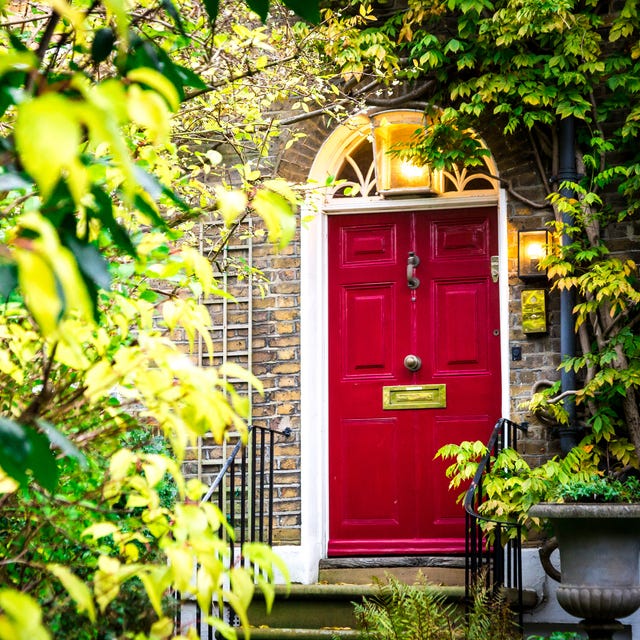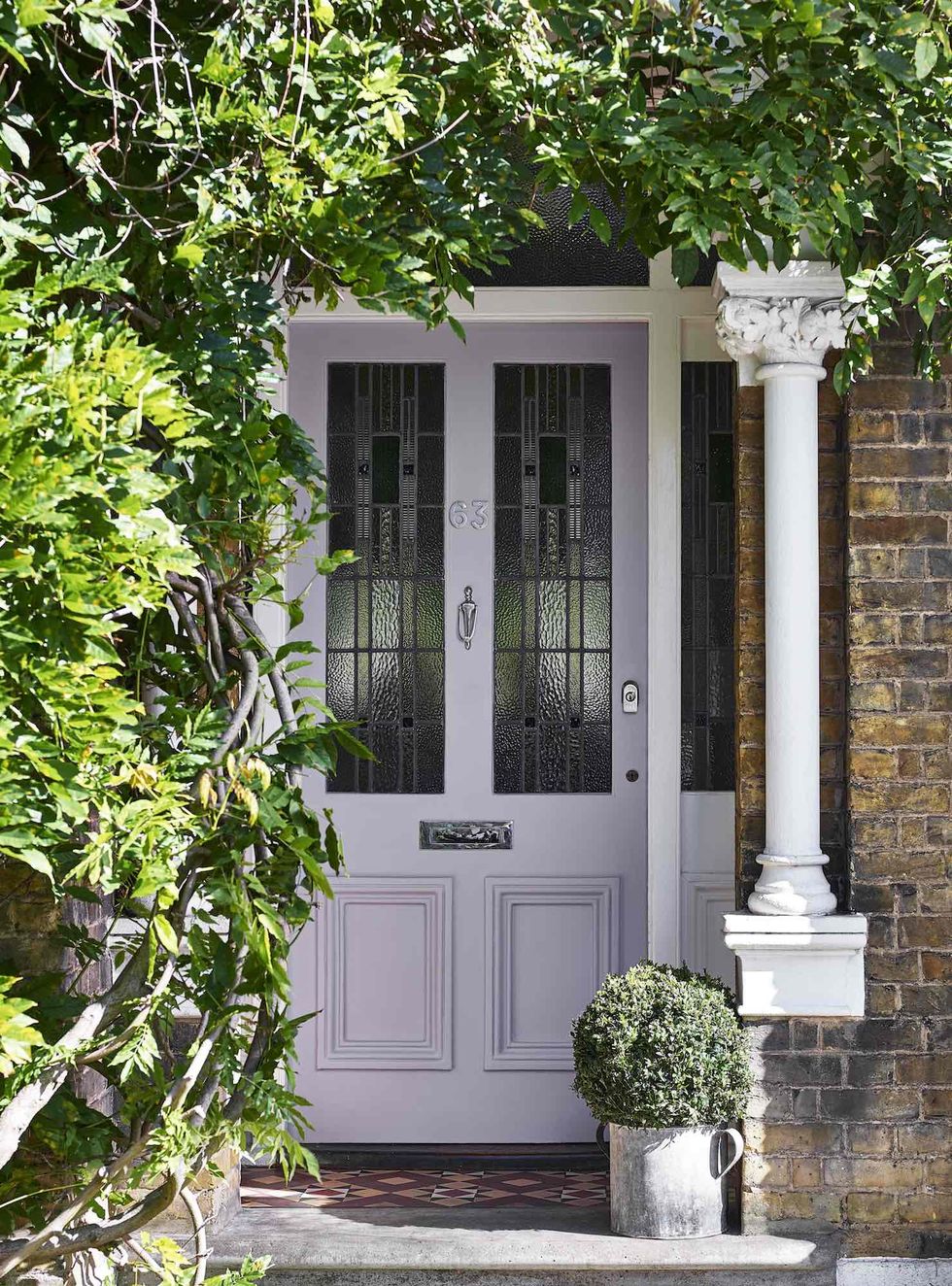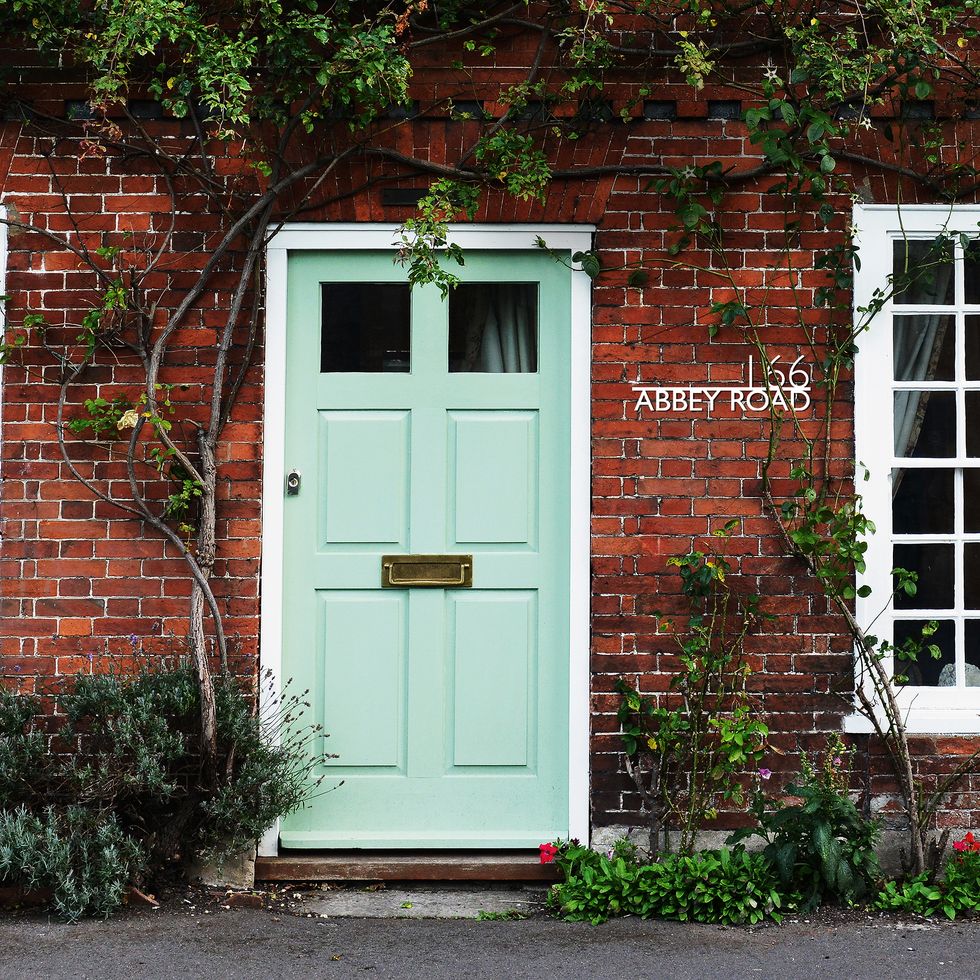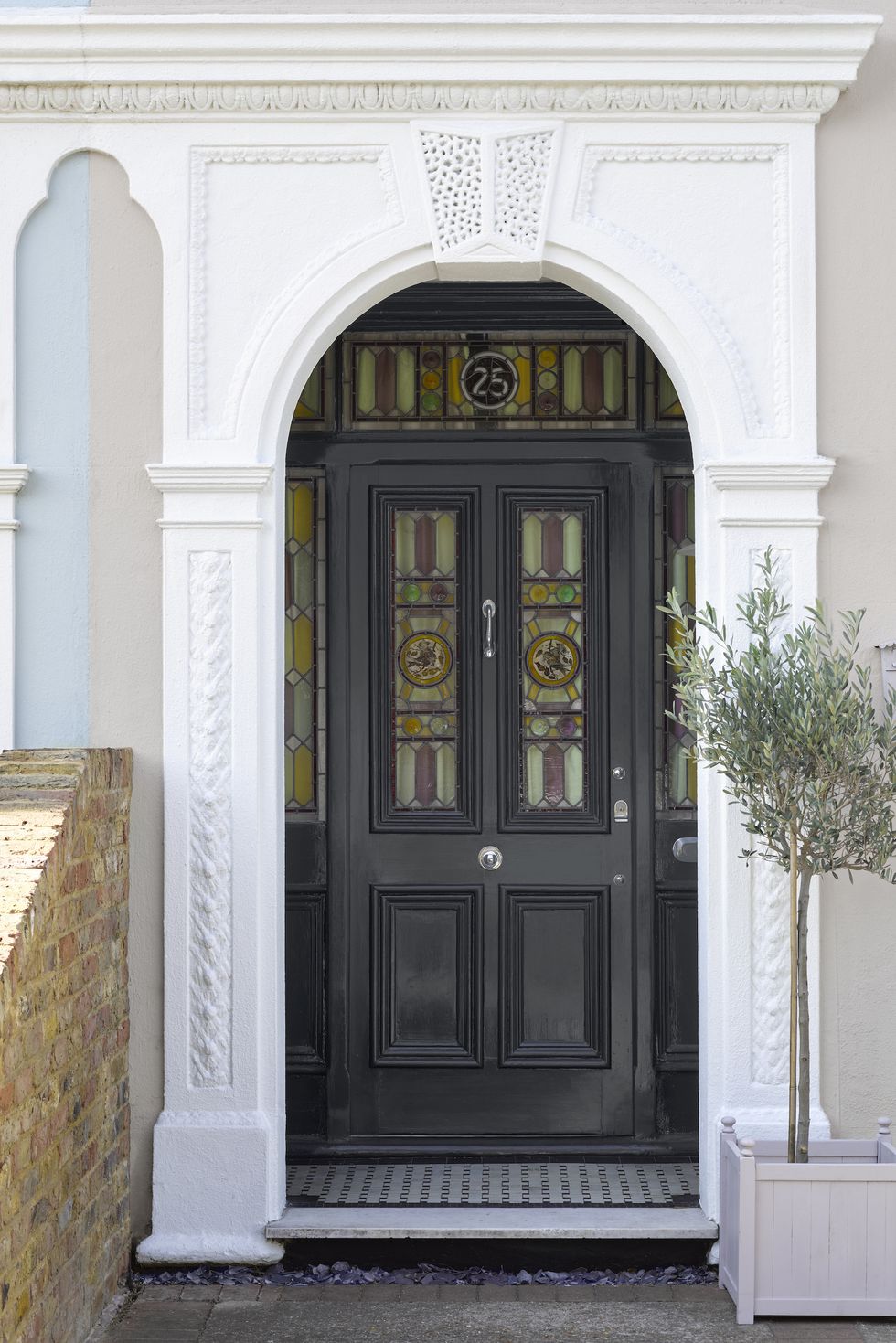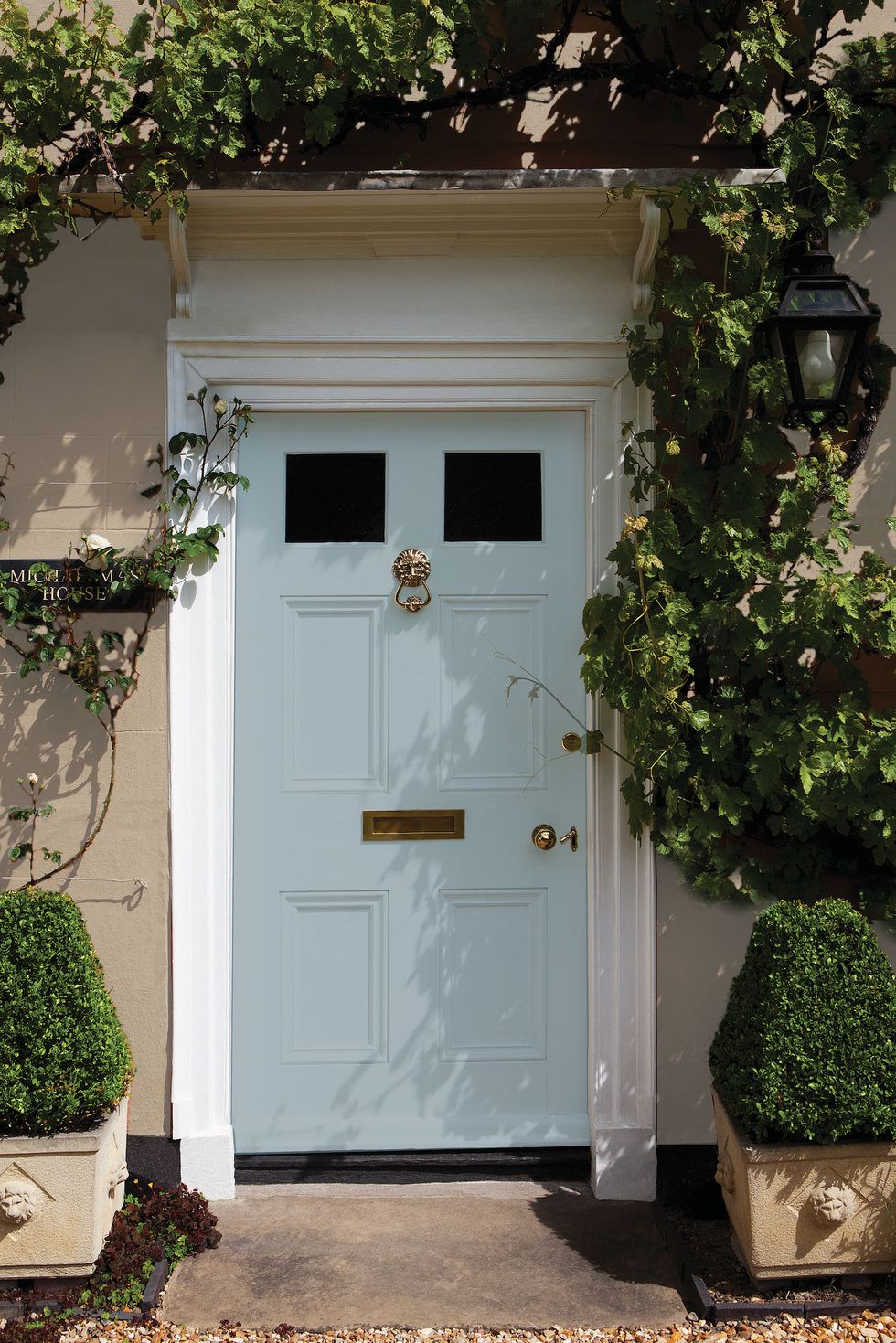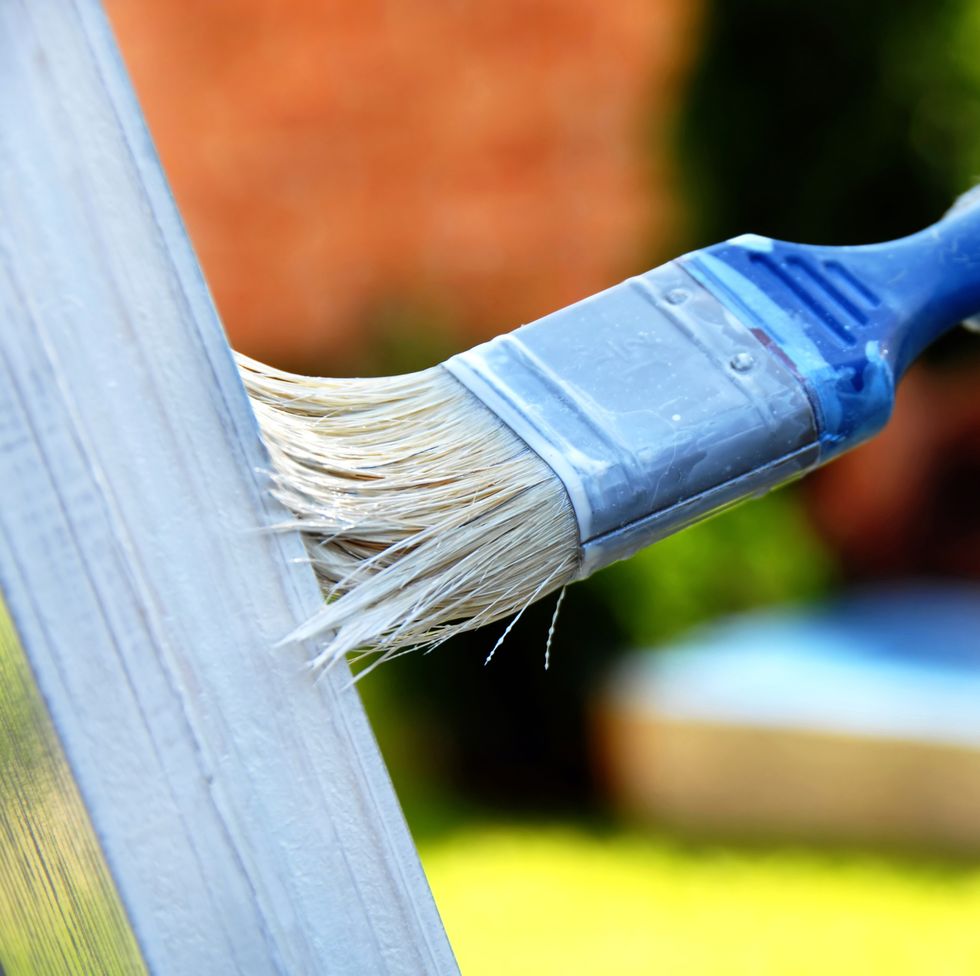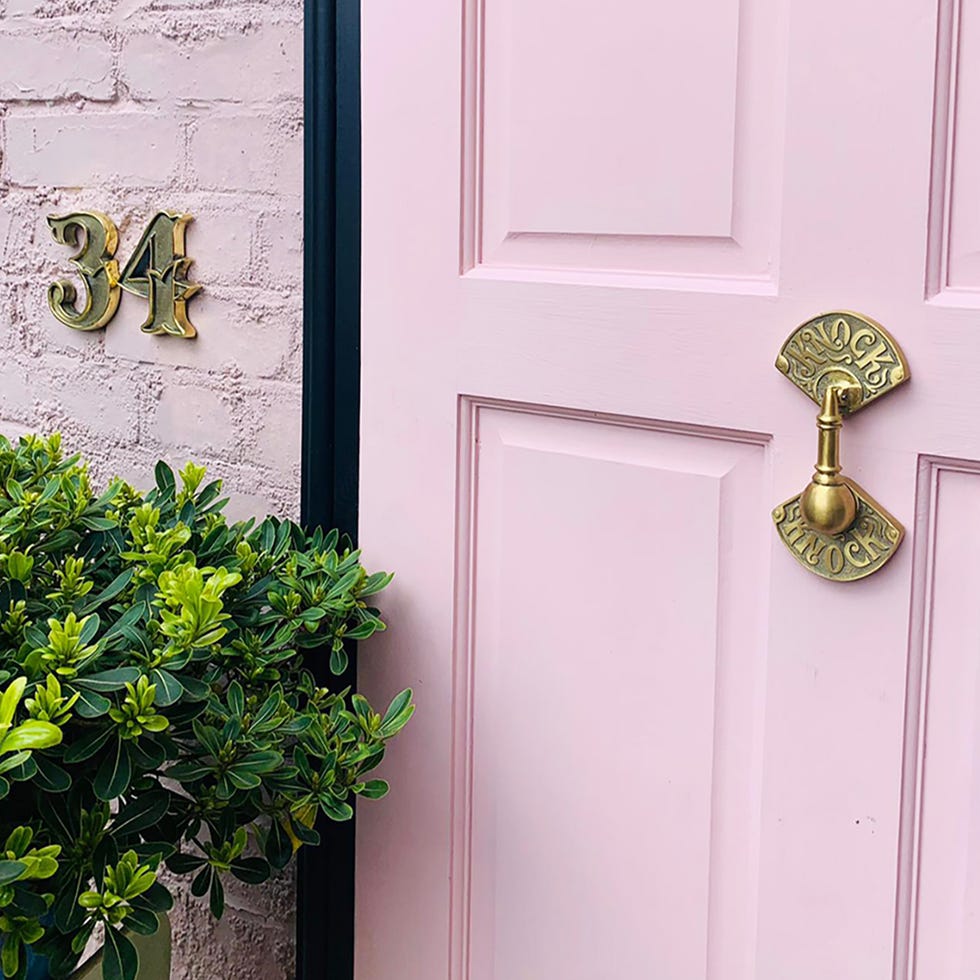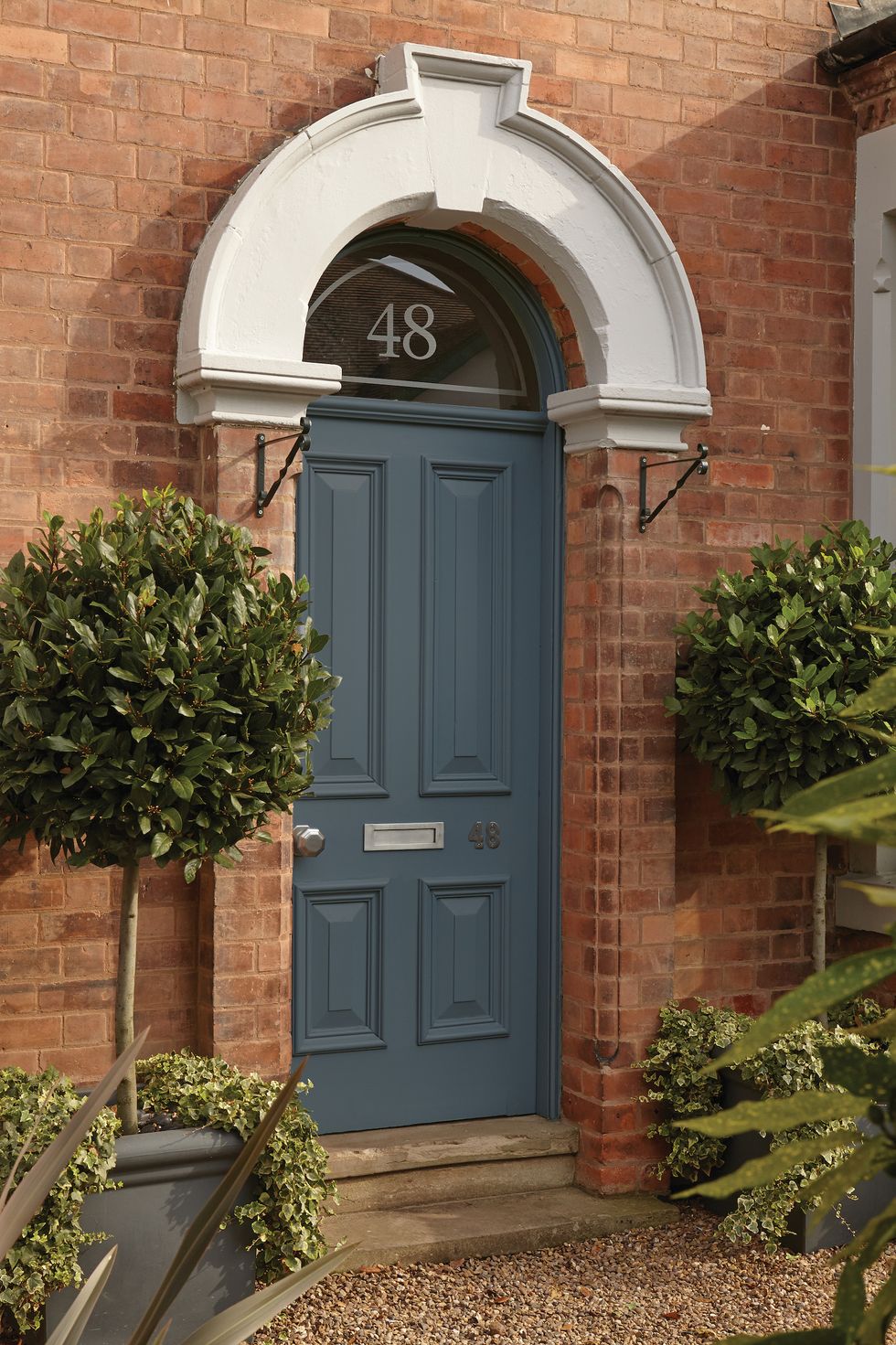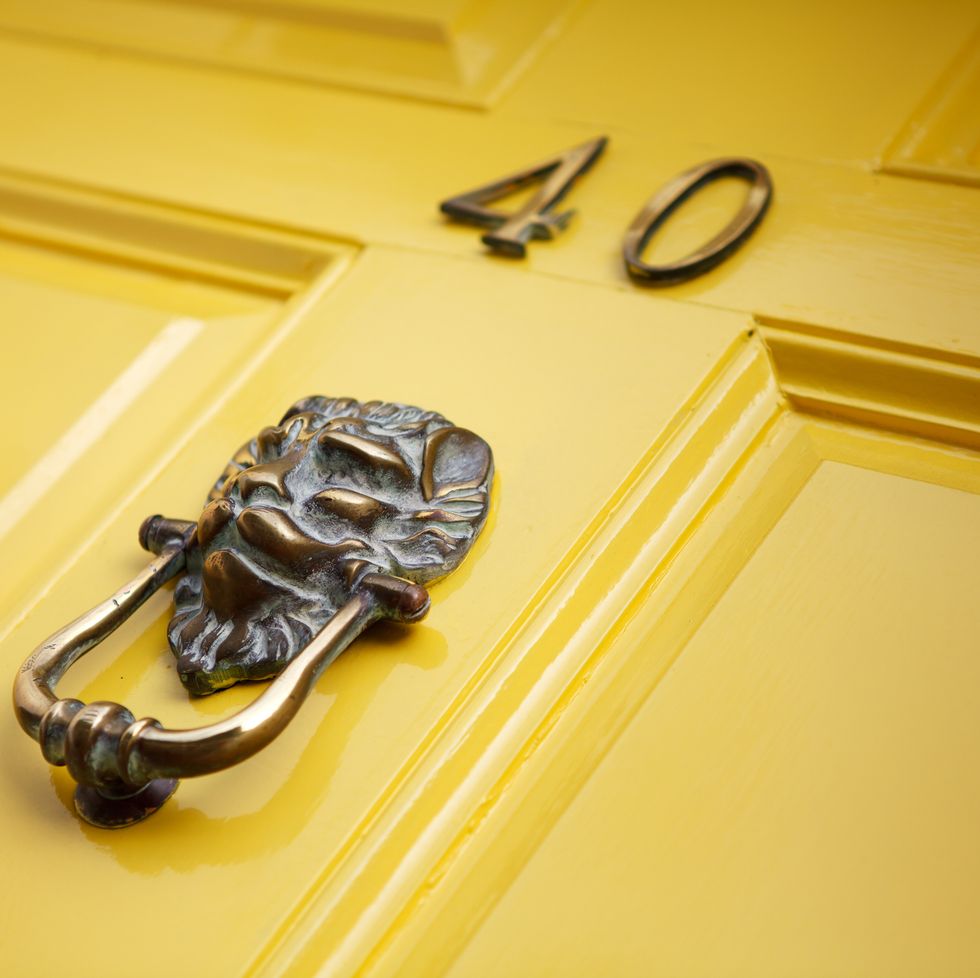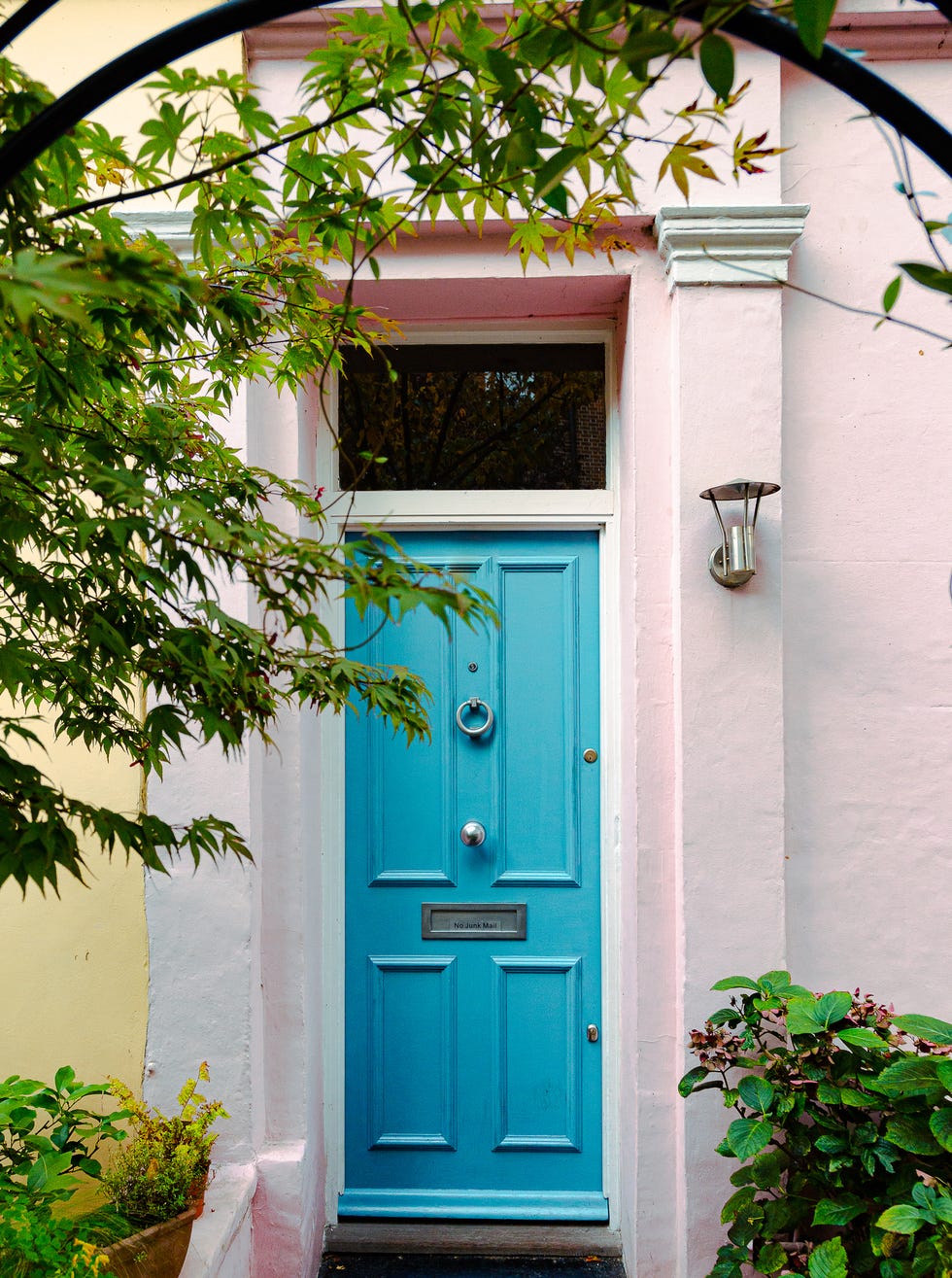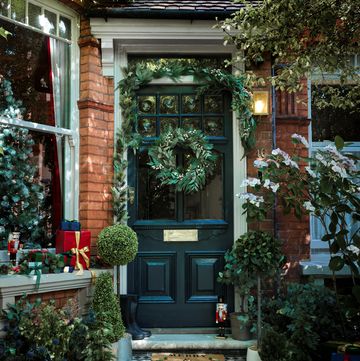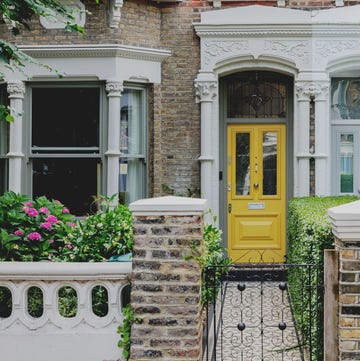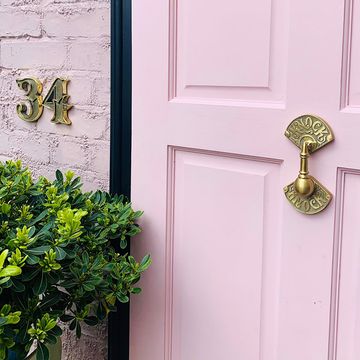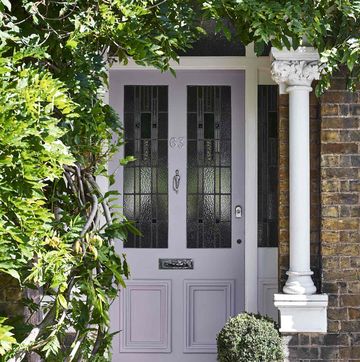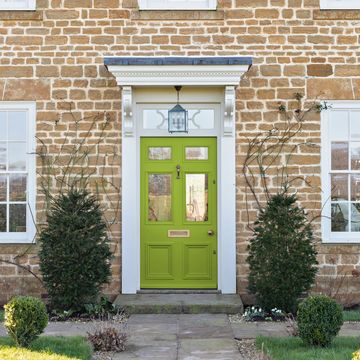Your front door is the first impression family, friends and visitors have of your home, so it's important to keep it in tip-top condition. A new coat of fresh paint is a relatively quick (you can do the job in a day) and inexpensive transformation. We asked experts to share their advice and top tips for painting a front door.
Front door paint: what type of paint is best for a front door?
'Gloss paint is super-shiny and looks fabulous in rich, dark colours, but the surface of the door has to be in really good condition or the light will bounce off any lumps, bumps and imperfections and draw attention to them,' says Marianne Shillingford, creative director at Dulux. 'A semi-gloss satin finish looks great in all colours and hides a multitude of sins if your door isn't as perfect as it was when it was brand new.'
Solvent-based gloss paints are generally considered to be the toughest, most hard-wearing finishes. However, gloss paint needs great care and a super-steady painting hand as spills and slip-ups can be difficult to remove from surrounding brickwork or masonry. Also, brushes must be cleaned carefully in white spirit, which can be a messy job.
There are also now excellent water-based opaque paints on the market, such as Sadolin Superdec, with a flexible, creamy consistency and a flat, satin finish. Water-based paints will dry more quickly between coats than gloss paints. Brushes which have been used for water-based paint are cleaned in warm soapy then clear water.
A front door painted with opaque paint will weather naturally – how quickly it does so depends on how exposed the door is to the weather and extremes of temperature. Gloss paint, on the other hand, tends to bubble, crack and flake with age.
'Traditional solvent gloss paints have generally been thought of as the toughest, most hard-wearing finishes but these days water-based technologies are so advanced that these systems should now be considered on a par, if not better,' says Mathew Brown, technical consultant for Sadolin and Sandtex.
What paint should I avoid?
You should never use a paint designed for interiors on a front door, even if it says on the label that it's for woodwork. 'All your hard effort in prep and painting will be lost to the weather in double quick time,' warns Marianne.
What is the best colour to paint a front door?
This spring, front door paint colours take inspiration from nature, says Marianne; petal pinks, soft organic greens and pale sky blues: 'The best-dressed doors will be wearing shades that put a smile on the face of your house.'
Using two shades – contrasting lighter and darker tones of the same colour – makes a strong impact and is easy to create if you stick to a few rules. 'Think a dark and light shade of green like Green Glade and Garden Grey for example,' says Marianne. 'The wider the contrast, the more dramatic the impact your entrance will have.'
Or you could select two individual colours which work well together; try a smart aubergine for the main part of the door with grey accents or frame, soft pink and cream for a rustic look, or a deep coral with khaki for a touch of tropical splendour to brighten up any rainy day.
What is a fail-safe colour option?
If you're stuck for inspiration, the classic front door colour is super-glossy black, just like Number 10 Downing Street. It looks equally effective with traditional polished brass or contemporary polished or brushed steel chrome hardware. If this seems too heavy for your modern home, consider a less dominant shade such as charcoal grey or French navy. Both look good with polished or brushed chrome fittings.
Additionally, blue is a fail-safe choice for every style of home. Duck egg looks good with older homes such as terraced houses and cottages. Cobalt blue is also an up-and-coming colour for front doors, reflecting 2022's cheerful and upbeat home trends.
Do I need to prime my front door before painting?
You should always sand down the front door before starting, fill in any gaps and holes and sand again before starting to paint. But primer? Traditionalists will always apply one coat of primer before adding layers of paint. However, modern paint formulations mean that you can choose to skip this step if you wish. 'When using our Weatherproof Wood Paint, there's no need for primer so it's easy and quick to apply,' says Rachel Meadowcroft, senior product manager at Ronseal. 'What's more, it can be used on any smooth sawn outdoor wood aside from decking, so leftover paint can be easily used for other jobs.'
What's best: a roller or brush?
Experts are divided on this debate. A brush allows for more control of the paint. You need to work harder to apply paint with a brush than a roller so the action helps you to concentrate on the job and be methodical in your approach. A brush will also allow you to apply thinner layers of paint which reduces the possibility of the paint bubbling – especially important with gloss. Try to use a wide brush for the main part of the door to avoid the paint streaking as you apply it.
A roller is quicker and could be a good option for covering a flush door or the inside face of a front door because there will probably be less detailing and mouldings to take into account. You could also use a combination of a roller and a small brush for the intricate parts of a door, including any areas which involve painting carefully around glass, which should always be masked with masking tape or a paint shield.
Front door paint techniques
Always remove all door furniture – knobs, knockers, letterboxes, numbers – before starting the job as it's almost impossible to paint neatly around them. The advice is to paint in the direction of the grain of the wood, in straight lines. However, it is possible to 'cross-hatch' – painting one coat horizontally, not vertically – to ensure depth of coverage, carefully blending as you go. This might be especially necessary if you're making a big colour change.
B&Q has created a useful step-by-step guide detailing how to paint your front door in a day including specific advice for painting a panel door, a glazed door and a flush door:
Painting a panel door: Start with the panels and the mouldings that surround them. Next, paint the centre vertical. Then paint the cross-rails, starting with the top rail and working down. Paint the outer verticals, and finish by painting the three exposed door edges.
Painting a glazed door: First, paint the mouldings around the glass with a cutting-in brush. Next, paint the cross-rails, starting with the top rail and working down. Then paint the outer-verticals, and finally all three exposed door edges.
Painting a flush door: Divide the door into eight imaginary sections. Start at the top left and work down from left to right. Blend each area into the next, while the paint is wet, finishing with vertical strokes in line with the grain. Paint the door edges last.
How much paint is needed for a front door?
Always check the coverage rate recommendations on the side of the can. As a general rule, says Mathew, a full litre of paint should be enough to apply three coats to a front door, including both sides, front and back, top, bottom and edges. 'Just make sure you apply the correct number of coats in line with manufacturer's coverage recommendations,' Matthew warns. 'Otherwise, durability will be compromised and you'll just end up redecorating and maintaining your door more often than you have to.'
How many coats of paint do I need on a front door?
This will depend on the existing condition of your door. It might be possible to get away with just two coats, but if your front door is bare wood, you might still be able to see the grain after two coats so will need a third for a solid colour, says Rachel.
How long does it take for paint to dry on a front door?
Try to choose a dry and relatively warm day with no rain on the horizon. This will help the paint to dry between coats. If the forecast is poor and you're desperate to paint your front door, do all the preparation the day before so you can make an early start and concentrate on painting.
How long 'drying time' takes depends on the kind of paint you use. Gloss takes longer than water-based opaque paint. Check the tin for guidance, but you may need to leave up to two hours between coats. It's a good idea to plan this ahead so you don't end up with a still-wet front door as darkness descends.
The paint doesn't have to be 'cured' at this stage, but should feel dry to the touch. Don't rush things; adding layers too quickly will mean that the paint doesn't adhere to the surface correctly.
Before closing the door, make sure that the paint on the outer edge of the door is totally dry. A good tip is to apply a long strip of Vaseline inside the door frame to create a barrier when you close the door.
How do you avoid a front door sticking to the frame?
The simplest way to do this is to either remove the door to paint it, or wait very patiently for each coat to dry before closing the door. If your door is prone to sticking in general, it may be necessary to gently sand the outer edge back a little. Never take too much off when sanding – it could be counter-productive and lead to draughts.
Can you paint a front door without taking it off the hinges?
Traditional house painters would always remove a front door from its hinges for painting, laying the door between two saw-horses in the front garden. 'For doors that are severely weather-beaten, it might be better to remove them from their hinges so you can easily work on them,' says a spokesperson for trades comparison website Checkatrade. 'For doors with less damage, you might get away with leaving them on their hinges.'
If you need to re-hang a front door, never attempt to do the job on your own – doors are heavy and can be difficult to manoeuvre into place. Always ensure that the door fits tightly into the frame at the top, bottom and sides. This will stop draughts whistling through and help your home to stay warm. A tight fit also prevents moisture ingress – rainwater seeping in – which can cause a timber door to swell.
How do I stop my front door from swelling?
Doors swell when moisture, such as rainwater, seeps into the timber. It's particularly likely to happen when the season changes – from a dry, hot summer to autumn, for example. Of course, one highly recommended way to prevent this happening to your front door is to ensure that it is painted properly to provide an impenetrable seal. Doors can also swell if there is damp present. Check your damp-proofing course (DPC) is intact and adequate. Internal damp in a porch, for example, can be tackled with better ventilation, improved insulation and the use of a dehumidifier.
Follow House Beautiful on Instagram.
